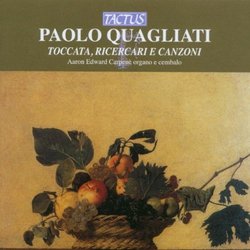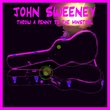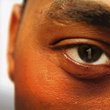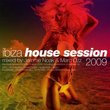| All Artists: Paolo Quagliati, Aaron Edward Carpenè Title: Paolo Quagliati: Toccata, Ricercari e canzoni Members Wishing: 0 Total Copies: 0 Label: Tactus Records Original Release Date: 4/10/2007 Release Date: 4/10/2007 Genre: Classical Styles: Chamber Music, Historical Periods, Baroque (c.1600-1750), Classical (c.1770-1830) Number of Discs: 1 SwapaCD Credits: 1 UPC: 8007194103533 |
Search - Paolo Quagliati, Aaron Edward Carpenè :: Paolo Quagliati: Toccata, Ricercari e canzoni
 | Paolo Quagliati, Aaron Edward Carpenè Paolo Quagliati: Toccata, Ricercari e canzoni Genre: Classical
Italian Renaissance composer Paolo Quagliati (ca. 1555-1628) was born in the Veneto region where he certainly received his first musical training before moving to Rome at the age of almost twenty. Most of his known comp... more » |
Larger Image |
CD Details
Synopsis
Album Description
Italian Renaissance composer Paolo Quagliati (ca. 1555-1628) was born in the Veneto region where he certainly received his first musical training before moving to Rome at the age of almost twenty. Most of his known compositions are vocal works. His only extant instrumental works are an organ toccata and a book of Recercate et Canzone. Only one extant copy of this important print is known today, fortunately preserved in a museum in Bologna. In this instrumental collection, as in the vocal works, one notes Quagliati's perfect mastery of the contrapuntal techniques which he would have studied in his youth in the Veneto. At the same time, we may note his experimentation with new constructive solutions in instrumental writing.
Similar CDs
| Kenn Orr I'll Be Tha One Genres: Christian & Gospel, Gospel Label: CD BABY.COM/INDYS | |

 Track Listings (20) - Disc #1
Track Listings (20) - Disc #1


